| Columns Retired Columns & Blogs |
May be JVS could do a comparison follow-up review with the Kalista DreamPlay CD player ($43,000) :-) .........
Because I wanted to hear the Ethos at its best, I opted for Roon Nucleus+ into the dCS Network Bridge via Ethernet into the Ethos via AES/EBU for the remainder of my listening.
As I write this, Gryphon is not yet an official Roon partner endpoint, but the Ethos recognizes Roon software and impressed me as taking full advantage of Roon's sound and metadata (footnote 1). (Among the many documents available for download on the Ethos webpage is one that addresses USB Roon Core Setup.)
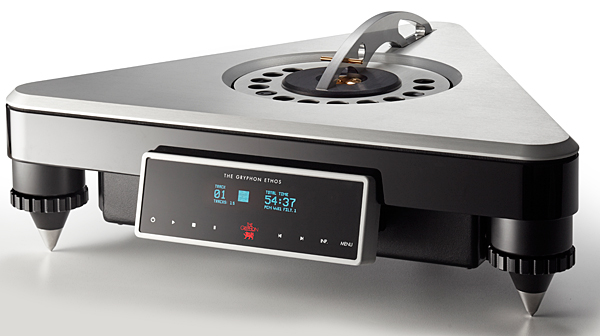
Once connected, I can't imagine that anyone would have difficulty using the Ethos. The letters on the display that indicate when unsampling is engaged are small but visible from 12' away, and choices between filters and PCM or DSD upsampling are indicated in big print at the time of engagement. You will have a harder time seeing track numbers and other information from afar. Downloadable USB drivers are required for Windows users, but that's the case with virtually all DACs I've reviewed.
Being wowed
I started out with my CD of Patricia Barber's Jim Anderson–engineered Higher (CD, ArtistShare AS0171), our September 2019 Record of the Month, and compared its sound to Red Book FLAC files of the recording. Both ways, the sound was drop-dead gorgeous. With the REF 6 adding just a wee bit of extra warmth, glow, and air, I loved the natural fullness of the midrange and the guitar's spot-on tonality.
Sticking with CD, I turned to an old reference standby, "Insensatez" from Entre Amigos, by bossa nova singer Rosa Passos and double bassist Ron Carter (CD, Chesky JD247). The sound's ivory-tinged core was beautiful, and bass depth and control were excellent. Listening to Murray Perahia's performance, on piano, of Handel's Harpsichord Suite in E, HWV 430, from Murray Perahia Plays Handel and Scarlatti (CD, Sony Classical 62785), was a total joy.
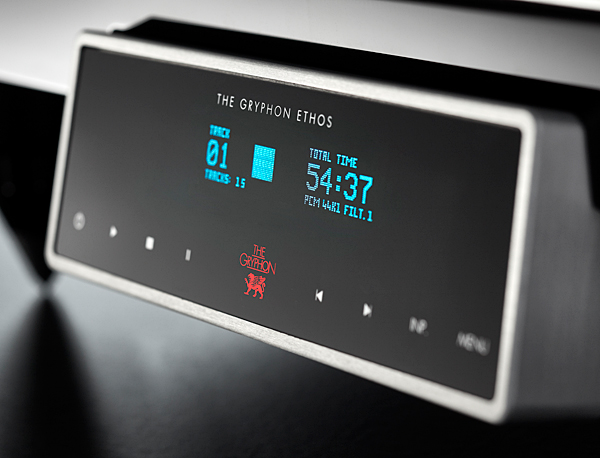
Going back and forth among 10 filters (7 PCM AND 3 DSD) can be a recipe for madness, so I spent only a short amount of time comparing them. For PCM, each of the seven choices had strengths in one area or the other, but for my tastes, default Filter 4 offered the best overall combination of extended highs, full midrange, well-defined lows, and soundstage width and depth. As for DSD, I failed to discern a difference between the three filters, which differ only in their choice of ultra-high passband frequency.
Midway through my time with the Ethos, I was delighted that Gryphon's US distributor, Philip O'Hanlon of On a Higher Note, paid a visit to Port Townsend. In his bag was a huge stash of reference discs, many of them hybrid SACDs. Although, per Stereophile's review policy, I didn't share my listening impressions with O'Hanlon, I could not hide the smile in my eyes when he played the CD layer of his Tony Faulkner–recorded hybrid SACD of the Florestan Trio performing the second movement of Debussy's Piano Trio, on their recording of Debussy, Fauré and Ravel Piano Trios (Hyperion SACDA67114). Depth was exemplary, and the piano's glow all one could ask for.
Or was it? This seemed the perfect time to experiment with the Ethos's upsampling feature. Once upsampled to DSD128, I felt that all barriers between me and the music fell away. While DSD upsampling certainly seemed most appropriate for the Red Book layer of a hybrid SACD—at least inasmuch as I would inevitably compare the experience to the sound of the disc's DSD layer—upsampling to either DSD or 24/384 PCM enhanced listening with additional air and depth. There was a far greater sense of believable acoustic space around the musicians, as well as additional texture and overtones. I liked the upsampling feature a lot.
Next, O'Hanlon chose the Red Book layer of a hybrid SACD of Vladimir Ashkenazy leading the Sydney Symphony Orchestra in Prokofiev's Lt. Kije Suite (Exton EXCL-00049). Prokofiev's music no longer draws me as much as it did in my childhood, when I played 78s of Peter and the Wolf many times, but I loved what I was hearing. In the second movement, baritone Andrei Laptev's voice especially impressed with its strength and beauty. We also auditioned hi-rez files of the Soundmirror-engineered version of the Lt. Kije Suite, from Thierry Fisher and the Utah Symphony Orchestra, due out soon on the Reference Recordings Fresh! imprint—it excels in sonics rather than conducting—and discovered that the Ethos conveyed pounding percussion with aplomb. Further confirmation that the Ethos can rock out came when I played tracks from Yello's Toy (24/48 WAV, Polydor 4782160/HDtracks) and, courtesy of Roon Radio, went flying on a pop music magical mystery tour.
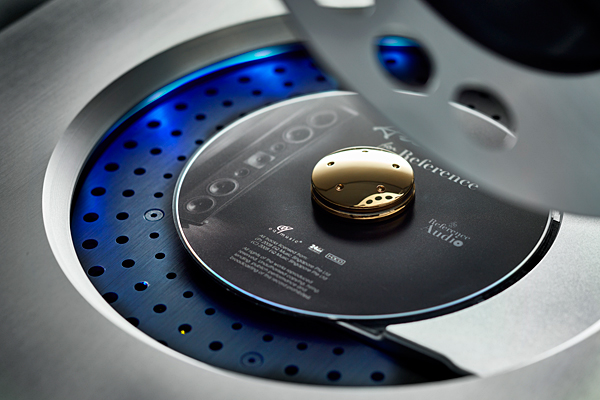
Taking my lead from O'Hanlon's choice of Debussy, I cued up files of two recordings of Debussy's haunting Trois Chansons de Bilitis: one by mezzo-soprano Marianne Crebassa and pianist Fazil Say from Secrets (24/96 WAV, Erato 564483), and the other from one of Debussy's favorite interpreters, soprano Maggie Teyte, with Alfred Cortot, from Maggie Teyte: A Vocal Portrait (16/44.1 WAV, Naxos Historical 8110757-58). The Ethos conveyed their artistry with such clarity and beauty that for several days after, the cycle's second song kept playing in my head. With upsampling engaged, I felt that I could hear every slight nuance and breath of Crebassa's performance, and I was moved as never before by the intentional absence of vibrato as she deepened her voice in the final song to simulate a man saying, with great profundity, "Les satyres sont morts/Les satyres et les nymphes aussi." No one I've heard does a better job with these lines than Teyte, who liberally infuses singing of exquisite delicacy and unsurpassed intimacy with an idiosyncratic downward portamento that makes me feel as though she's experiencing any number of little deaths. (She has no equal in this regard.) As many times as I've heard these women's performances, I still found myself sitting in rapt attention, as though hearing them for the first time.
When we compared DSD to PCM upsampling on 24/96 WAV files of two different recordings of Debussy's Sonata for Flute, Viola and Harp—the period instrument Claude Debussy: Les Trois Sonates/The Late Works (Harmonia Mundi HMM902303) and modern instrument Debussy Sonatas & Trios (Erato 565142)—I preferred PCM upsampling with native PCM material. Even though upsampling to DSD128 enhanced the depiction of recording venue dimensions and distance from microphones, its ultrasmoothness got under my skin. It worked fine with native DSD material, but upsampling PCM to PCM 384 transmitted more of the natural leading edge of instruments and voices, and felt more open, organic, and credible.
After O'Hanlon left, I headed to Tidal and Qobuz for two 16/44.1 tracks he'd played from disc: Bob Walsh's "Ain't No Sunshine When She's Gone" and Anette Askvik's "Liberty." I loved the sound of both but was especially seized by the additional attention-getting clarity and bass that came with PCM upsampling.
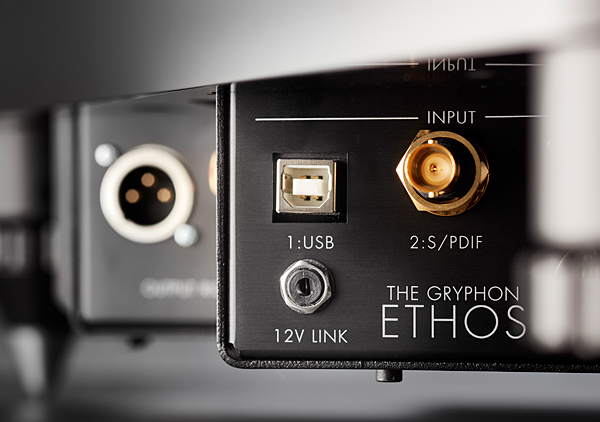
When I switched to my reference dCS Rossini DAC/transport/clock gear, I went back and forth more times than a dog turns in circles before sitting. I felt that the circa $60,000 Rossini combo set images farther back in the soundstage, surrounded by even more air. It let me hear the back of the hall in ways I did not experience with the Ethos. On Rosa Passos and Ron Carter's "Insensatez," the Rossini upsampling transport conveyed more vibrant highs, more of the bass's bottom octaves, and sounded a mite warmer and smoother. On Ashkenazy's Prokofiev, the airier Rossini better conveyed the third movement's humor and scamper.
I had hoped to hold onto the Ethos long enough to audition it with the D'Agostino Momentum HD preamp that arrives next for review, which would have afforded yet another window into the Ethos's sound. Timing is everything, however, and the Ethos had to move on to the Capital Audio Fest. If you ever hear the two together, count me eager to hear your report.
Conclusion
God, Serinus, are you about to file yet another rave review? Have you been bought off by manufacturers, or are you listening through rose-colored glasses?
Lest I come across as a perpetually smiling Girl Scout cookie salesperson, whose innate optimism could convince a diehard nutritionist that sugar and white flour are health foods, rest assured that the antiglare tint on my plastic lenses is yellow rather than rose. Regardless, my response to the sound of the Gryphon Ethos CD player and digital-to-analog converter requires more smileys and flowery GIFs than this space can reproduce. The Ethos is one open, marvelously detailed, and fresh-sounding unit that makes listening to music an absolute joy.

May be JVS could do a comparison follow-up review with the Kalista DreamPlay CD player ($43,000) :-) .........

Mirror, mirror on the wall, who's the fairest of them all? :-) .........

So CD player, CD player, which one sounds better ?
Electronic technology advances daily. A state-of-the art designed audio component todate could become a kid's toy soon in the near future.
So to pay big bucks, say $40,000, to acquire a Redbook CD player would be a shaky investment, right ?
Historic paintings, & brandnamed timepieces, like Rolex, for example, appreciate in the market value & are pretty profitable on resale - sound
investment !
Being a die-hard analogue addict enjoying a collection of 1,000+ vinyl LPs (95% classical music), my CD, DVD-audio, Blu-ray discs & streamer are only side-burners. Why? no digital music media todate, IMO, can touch the sound quality of vinyl.
So those affordable digital music lovers, before spending big bucks, like $40,000, to acquire a CD player, why not look out from the 40-year-old Redbook CD box for other better option with more promising music source?
IMO, Blu-ray format is another option, much much more affordable.
Blu-ray HiFi Pure Audio discs are the new digital music star vs SACD.
There are so many Blu-ray music HD (4K) audio/video music programmes now available, e.g. Sony Music, EuroArt, UNESCO, etc.
Look out of the RedBook CD box to find new music source !
For an analogue addict like Yours Truly, my music pleasure surely worths
more than $40,000 yet without financing any exotic hardware vendors.
Listening is believing
Jack L
Canada

Look at it this way ...... Either one of those above mentioned CD players may be a better value than the $50,000 tonearm reviewed in Stereophile :-) .......

Thanks for review, reading your AR M160 review, I remember you liked Progressions without Ref6 pre. Anything has happened in between because you mentioned here that you were using Ref6 with better result. And generally, will you please advice if you prefer direct connection of your dCS stuff to power amp or using a pre. Thanks Jason.

Thanks for review, reading your AR M160 review, I remember you liked Progressions without Ref6 pre. Has anything happened in between because you mentioned here that you were using Ref6 with better result. And generally, will you please advice if you prefer direct connection of your dCS stuff to power amp or using a pre. Thanks Jason.

Hi Ali,
For an answer, please look for my forthcoming review of the D'Agostino Momentum HD preamp. It will help answer your question. As for the ARC Ref 6, it has just been replaced, with an upgrade for existing owners available for $3000.

How about comparing all those pre-amps with Benchmark LA-4 (reviewed by Stereophile) or Benchmark HPA-4 (reviewed by Hi-Fi News)? :-) .........

If JVS likes the 'warm' sound of tubes, may be he could review the new McIntosh C2700 tube pre-amp with built-in DAC and headphone output, $8,000 :-) ........

Jason, it takes some time to find your optimal filter choices but once you find them it is pretty much set and forget. I find the choices helpful.
A nice review.

The review noted:
"Many of our competitors take the current from the output and transform that into an analog voltage," Møller explained. "Instead, we take the voltage directly from the DAC circuitry..."
In fact, most Delta-Sigma dac chips today (including those less than $1 ea.) are voltage out.
-------------
"So Gryphon went with StreamUnlimited of Austria's CD-Pro 8 drive, which only handles CD. "
Interesting ... and very cool that there are still high-quality drives out there. Not sure whether StreamUnlimited is superior to Philips or TEAC.
-------------
For a device THIS $$$, Jason Victor Serinus should have compared to more units (CD players), regardless of price diff. This includes older high-end players from Naim, Boulder, Meridian, etc.

Mr. Hollow, Respectfully, the ESS 9038 PRO DAC chips can be either current output, or voltage output, depending on how they are loaded by the following stage. Interestingly, the ESS 9038 actually produces higher performance when operating in current mode (in terms of DNR), and this is how most manufacturers use these chips. It is unusual for a manufacture to purposefully use the ESS 9038 as a voltage source, so Gryyphon is doing something, perhaps unique, in their implementation of the chips. Although by doing so they are leaving some measured performance on the table; perhaps to gain in some non-measurable parameter based on their listening experience.

The problem with these sorts of expenditures is that they pretty much are disposable items. They become technologically obsolete because of the electronics in a few years.
If you purchased a Patek Philippe watch for the same dollar amount today, there's a really good chance that it would be worth more than what you paid ten or forty years from now, even accounting for inflation.
I can't explain why mechanical devices do better over time than electronics, but they do. Perhaps it's because the individual components go out of production in electronics gear, with very few replacements available over time. If you need a mechanical part, somebody can always machine you a new piece. That's pretty hard with silicon.
I'm not throwing water on a product like this, or critiquing anybody who purchases one. It's just an observation on my part.

...then, what, it's only worth $35,000?

Who in their right mind would spend $39,000 on a CD player? Even if I hit the lottery I would never spend that much

I guess I have no issue with someone offering such a "CD player", but the issue is are there any other players that come near or at the performance of this player for under $5K? Audio bling does not bother me any more the Michael Fremer owning a Caliburn turntable that I can't even afford to dream about. Do his reviews of LPs have any real-world information to pass along to me, one who has refurbished a Dual 502 and put a Rega arm on it?
I am sure that any LP Mr. Fremer would play would be totally revealed to be great or awful. I cannot make those value judgements on the gear I own. It would not be fair, as it would not be fair to judge music playback on such pedestrian equipment I own and use.
So the only real question is does this player have any flaw, because at that price I would think it must not. It is no surprise that DCS gear is so highly praised as cost is no object should win the day. When something is more that any of my first 3 houses in cost, I must pause and ask the question; Where is this hobby going? Can a Tesla be just "another" car?
I can readily see that this is a remarkably great looking player, but it is no wonder why people make fun of audiophiles. There have been CD players reviewed in Stereophile in the $5K to $10K range that have not survived the scrutiny of JA1 when put on the bench. I am glad that this one seems to have passed the test as I feel the owners who anted up a tidy some do deserve not just to have audiophile "bling", but also a truly state of the art player.
I will take some hits for saying this. And, maybe a big part of the cost of this player is the distribution of the R&D that went into the design and manufacture of this player based on the quantity of sales. Nothing come for free.

Measured performance better be great! Unless they messed up and could not deliver standard levels of performance which should be uniformly excellent.
I think most audiophiles appreciate that the price difference between this and a $1000 ES9038Pro DAC is not to be found in the sound quality.

... consider the Marantz SA-KI Ruby or the Yamaha CD-S2100.
https://www.us.marantz.com/us/Products/Pages/ProductDetails.aspx?CatId=referenceseries&ProductId=SAKIRuby
https://usa.yamaha.com/products/audio_visual/hifi_components/cd-s2100/index.html

is that the $1500 CD player by Project uses the same transport, and the quality of the transport is never to be overlooked. I'll bet it is one heck of a player. Denon still makes an CD/SACD player in that same price range.
I just bought a slot load player from a reputable MFG for use at school for our concerts and music programs. Now the player won't read some commercial CD or some CD-Rs. Trying to get it serviced under warrant has been a pain for over a month now, as it is under a year old and still boxed up on my recording studio floor. I will pay more attention to transports of players I buy in the future. Warranties and length of do matter.

I just wanted to point out that Roon is not limited to DSD128 playback but will play files up to DSD 512 with equipment that supports it.

The affliction of CONSUMERISM is the same for the very high end as it is for the low-wage American walking out of WalMart once a week with cart full-o-useless landfillables.
Major pubs, like Stereophile and TAS, do not directly compare new products with legacy ones because of what they may find. Indeed, why have R2R dacs and non-oversampling dacs and vinyl and open reel come back? Better sound? Maybe. Boredom with same-ol'-same-ol'. Gettin' close!

First, some of the formats you mention never went away, and are the subjects of our reviews. Secondly, we don't compare new products with some of those you mention because each reviewer would literally have to pay for a warehouse to store all the products that our online critics have decided we "should" have used for comparison. We'd also have to own them or request them on loan, and have enough time and room for all the set-up required. Dear Sony, Could you please send me your CD player gratis so I can show how poorly it stacks up against the player I'm reviewing? I don't think so.
"Because of what they may find" suggests that we're afraid to voice criticism. Q.E.D.

I should've added that when cross-comparisons with legacy products are neglected, it is a disservice to gear manuf. as well. Because the product (or the product niche) never really evolves in time.
That said, John Atkinson's Measurement's section (and his devotion to that section) merits praise.

John Atkinson's Measurement's section (and his devotion to that section) merits praise.
Thank you. I do wonder at times how widely these measurements sections are read, but I consider them very important, given how few other magazines/webzines publish measurements.
John Atkinson
Technical Editor, Stereophile

I read them 'religiously', more than any religious books, I have ever read ....... Thank you JA1, you definetly deserve 'Knighthood' by the Queen :-) .........

Very cool design - but the fact that it cannot play SACD means that the entire design places form above function, which really doesn't make sense at this price point. You could get away with it on a budget product designed to look nice - but designing a so-called premium product that cannot even play hi-res SACDs sadly means this is dead on arrival, other than perhaps as a photoshoot for coffee table books.

Why build a device that will also play SACD? SACDs cost too much, everybody just buys CD, so this manufacturer is keeping the expenditure and price to the consumer more realistic by sticking to CD. Adding SACD would probably make it a 42,000 dollar proposition, and that would be ridiculous.
(Please note, I posted in 'sarcasm font,' no need to quote me any sales or specification data.)

The cost of manufacturing SACD is higher than manufacturing CD. Jared Sacks (Channel Classics), a major proponent of SACD and DSD, now only issues his best-selling artists in SACD because SACDs cost so much to manufacture. He issues the rest in CD format, and offers DSD downloads of those titles on NativeDSD.com.

But those of us who want a copy of Edith Peinemann performing Dvorak's Violin Concerto, have two options; I can purchase a potentially scratchy vinyl copy from ebay for $75.00 or I can buy an SACD copy from Japan for $49.99 which has plenty of those coveted titles we collectors yearn for. Sorry at $35,000 without an option for SACD is a non-starter for most folks. EMM labs still makes them as does Esoteric. Can get great performance from 44.1 these days from setting up a computer system and ripping your CD copy.

... performed by Edith Peinemann not acceptable?
https://www.amazon.com/Dvorak-Violin-Concerto-Serenade-Strings/dp/B000FILNQW

"... and offers DSD downloads of those titles on NativeDSD.com."
Unfortunately, the days of the download are pretty much over - consumers don't want them anymore, the file management issues are too difficult, and the cost prohibitive compared to streaming which has wiped out downloads in the non-physical market. This is a physical player - and it is not competing in that space because it can't play the relevant formats.

This review brought back to mind a chat I had with the owner of a well know hi-fi manufacturer some years ago. He explained to me why he approached the whole reviewing process with trepidation: “A glowing five star review doesn’t add a single sale, but four stars - or any caveats at all really - can kill a product stone dead.”
Therefore despite both the undoubted prestige of being this month’s cover star, and the fact that JVS makes it abundantly clear he thinks the Ethos sounds pretty fabulous, I suspect the manufacturer's focus might be drawn more sharply to the brief somewhat cursory four point comparison the reviewer makes to his own dCS combo - the Brits proving preferable each time. And yes I know they cost $21k more, but I suspect if a potential customer can afford $39k to start with they will likely be able to make this stretch if so desired.
Many moons ago Gryphon withdrew from the American market following a review that criticised their equipment for being too neutral sounding (or at least something to that effect). Obviously there will be no repeat of that this time around. But I do still end up wondering if they will be that much happier with this one despite the overall positive tone. I guess we will find out when they reply in the next issue.

I wonder what rationale The Grypon used for nomenclature. "Ethos"?
They read the wiki:
Ethos (/ˈiːθɒs/ or US: /ˈiːθoʊs/) is a Greek word meaning "character" that is used to describe the guiding beliefs or ideals that characterize a community, nation, or ideology. The Greeks also used this word to refer to the power of music to influence emotions, behaviors, and even morals.

I didn't know 'power of music to influence emotions, behaviors and even morals' costs, $40K :-) ........

... Goldring is called the Ethos.
Their stated intent for choosing that name is to reflect the character of the company - hence definition number one.
https://www.goldring.co.uk/goldring-ethos.html


Well, once you get the nomenclature outta the way ("Ethos"), other Greek trends begin to reflect in the echo chamber. Anyone see similarities ...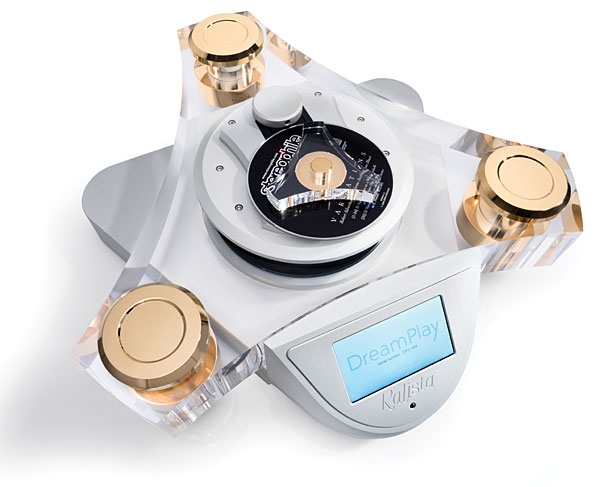


Similarities? ....... Yeah ..... They both are very expensive and, they both look like UFOs :-) .........

..."Viewmaster" capabilities.

Ethos responds to voice commands ......... Just say 'open sesame', and the lid opens ....... Then load a disc and say 'close sesame', and the lid closes :-) .......

Instead of spending $40k on a CD player, one can buy any of the various servers available on the market and, transfer terabytes of CD data .......... Comfortably sit on the listening chair, and listen to music for hours :-) ......

It is simply a fact that wealthy hobbyists encourage manufacturers to push the envelope. New technologies then trickle down to benefit all hifi enthusiasts. It baffles me why some in the community cannot see the huge merit of this. And it is up to the discerning consumer to decide if he wants to buy into new technologies or not. This is a hobby after all, which keeps a lot of brilliant artisans and superb craftsmen usefully and peacefully employed, provides a income to artists and keeps us, listeners, very happy.
But I would like to comment on the physical media and my own experience with them. I do hope that manufacturers and producers read the comments posted on Stereophile. They might provide them with food for thought.
I am in the blessed position to own both a top-end vinyl replay system consisting of a Clearaudio Master Innovation with Statement parallel arm and Ortofon Century, and a 3-piece suite of dCS Vivaldi Transport, DAC and Clock. Amplification Burmester, loudspeakers Audio Exclusiv (full electrostatics). With a great deal of attention given to power supply, cabling and equipment support. With other words, a dream system built over many years and optimized to enjoy the sound reproduction of “non-electronic” instruments (classical, jazz, voice). 80% of my listening is classical. I don’t “do” streaming.
Being completely unbiased, and heavily invested in CD, SACD and vinyl with some of the best equipment to play them on, I can postulate today with confidence that SACD, when well recorded, is the King of Formats. And this notwithstanding the fact that I am obsessed with vinyl. But when I compare the same piece issued both on SACD and vinyl (Channel Records, Pentatone), SACD carries the day by a whisker: a touch airier, a slightly truer tone and yes, an even better “flow” that facilitate following the musical argument. On the other hand, vinyl’s sound stage remains unbeaten, as the ClearAudio parallel arm recreates a truly “cavernous” sound world. And although both media allow unrestricted (subjective) dynamics, SACD is simply a fraction quieter. CD is a VERY distant third (notwithstanding the dCS wizardry to bring it to life).
I find it therefore incomprehensible why Universal Music Group, which owns a.o. DG, Decca and EMI robs its artists of the opportunity to record on SACD. UMG even makes a mess of pressing vinyl. Listen for instance to the popping, cracking, rumbling (!) DG vinyls of Abbado’s Bruckner 9th, his last and deeply moving recording – with the superb Zimerman in Schubert D959 & 960 barely better. I therefore bade farewell to my roster of UMG artists and, when buying digital, I now exclusively buy SACDs. From labels like Ars, BIS, Challenge Records, Channel Records, Pentatone, RCO Live etc. And guess what: I discovered stellar performances by stellar new artists (or who migrated away from UMG), superbly recorded - by which I mean: “uncannily close to Live”. I wish opinion-makers at Stereophile would walk that extra mile in favour of SACD.
I would therefore also caution lovers of classical music and jazz when they audition the Gryphon Ethos. They should compare it with a good SACD player. SACD as a format is so much more enjoyable to listen to than CD, especially in the above genres. Is CD therefore a basket case? Probably. Although a small Dutch label, TRPTK, produces beautifully recorded CDs. Maybe it is on to something. Whilst vinyl remains vinyl: superbly tolerant of mediocre recording, poor power supply, shoddy bases, with the hardware delivering excellent performance even at humblest price points (Dual!). Supremely affordable, lots of fun, and endearing. My 40-year old records still outclass anything on CD sound-wise, the 2nd hand market is awash with great performances sumptuously recorded with mint copies going for under 10 euros, new productions avoid the pitfalls of CD – even in jazz, with new work on the Newvelle label or by the venerable, magical Charles Lloyd.